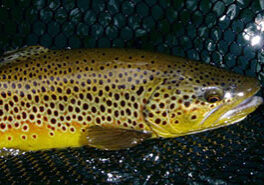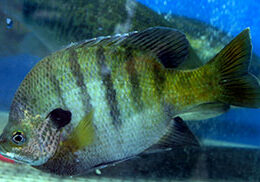
Bluegill
This sunfish has a short and deep body, a small mouth on a short head and a dark gill flap with no trim. There are parallel vertical bars on the side with long, pointed pectoral (side) fins. A male bluegill in breeding colors has brilliant blue fins and a red-orange stomach. The female bluegill is dark on the back with vertical stripes on the body. Bluegills are best caught in the morning or evening using small tackle ranging from a bobber and worm to delicate dry flies. Once one bluegill is located, others will be nearby. Bluegill spawn in colonies from late spring to August, building nests on gravel, sand, mud, leaves, or sticks in 1-4 feet of water. As summer heat becomes extreme, these fish move to deeper water and the shade of weed beds.

Black Crappie
Introduced in 1882, crappie are now abundant in eastern Colorado waters. Crappie are a pan-shaped fish with black splotches on a silver background, whose dorsal spines and rays get longer as they approach the tail. Crappie are a schooling fish that often congregate around vertical structures. Anglers have the most success for crappies jigging by structure in the early spring. Typically, crappie weigh 1/2 to 3/4 pounds, but specimens in excess of four pounds have been caught.
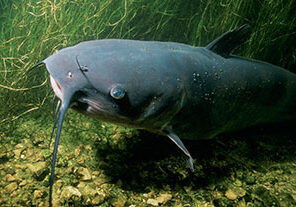
Channel Catfish
Channel cats are native to eastern Colorado and have been stocked in warmer rivers and reservoirs throughout the state. These fish are easily identified by their barbels (whiskers), forked tail and sporadic black spotting. Night fishing with live bait, chicken innards, flavored dough balls, or any other smelly concoction provides the best angling success. Cats larger than 30 pounds have been caught in Colorado, and for those willing to take the effort, they make a tasty dinner.
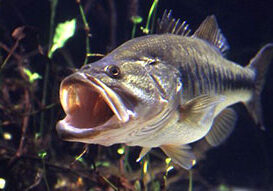
Largemouth Bass
Among the first species of fish introduced into Colorado was the largemouth bass in 1878. As the name suggests this fish has a very big mouth and its jaw extends past the eye. You can also distinguish them as the bass with the horizontal stripe on their body. Largemouth have exceeded 10 pounds in Colorado and are renowned for their aggressive predatory behavior. Casting lures and plugs during dawn and dusk hours around cattails and sunken logs will give you the best chance to land one of the lunkers.

Smallmouth Bass
Introduced to Colorado in 1951, small-mouth have been stocked in warm- and cool-water reservoirs and lakes in many parts of the state. The best way to distinguish the smallmouth from its cousin, the largemouth bass, is by the “smallies” jaws that does not extend beyond the eye. They maintain broken vertical lines on their sides and many have a reddish eye. Smallies are frequently caught along rip-rap shorelines with small jigs or crayfish imitations, and can be a great fish for impatient kids who may need a lot of action.
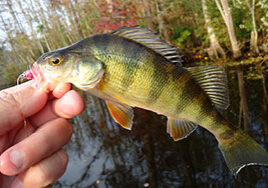
Yellow Perch
Another long ago introduced species, the yellow perch may be Colorado’s most abundant game fish and one of the most table worthy. Yellow perch have two separate dorsal fins with large vertical dark stripes on their yellowish sides. These fish can be found in large schools and are caught by using bait or small spinners. Yellow perch are usually less than one pound, but can be found over two pounds in some waters.
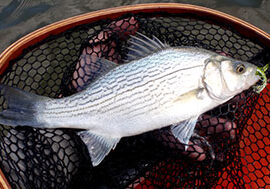
Wiper
Introduced into eastern Colorado lakes in the early 1980s, this fish is a hybrid between white bass and striped bass. Wiper have become a very popular sportfish because of their hard fighting. Wiper are a schooling fish that can be found “busting” prey fish on the surface during the summer. Casting shad imitations or various lures at the “busting” prey and holding on tight is a fun method for catching wiper. Trolling can also be effective.
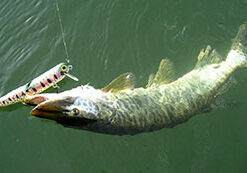
Tiger Muskie
The tiger muskie is a hybrid of northern pike and muskie. These fish were introduced into Colorado in the 1980s for the purpose of biologically controlling suckers and carp and providing a trophy-sized fish .The biggest fish ever caught in Colorado was a tiger muskie. Their long snout filled with teeth and dark tiger striped sides on a light body make them easy to identify. Many anglers relish the trophy fishing opportunities provided by these denizens of the deep, that in Colorado may reach over 40 pounds. The best opportunity to catch a tiger muskie would be by throwing large lures over vegetation during the summer. Northern pike look like tiger muskie, but have whitish irregular chain markings on a dark body.

Walleye
Since their introduction in 1949, walleye have been placed in most large warm- and cool-water reservoirs. You can identify walleye by looking for their two separate dorsal fins and a white tipped tail. Adults feed entirely on other fish and are most often caught by slowly cranking jigs and spinners over bottom structures. Walleye are one of Colorado’s tastiest fish and they have been caught in excess of 18 pounds.

Saugeye
This hybrid of walleye and sauger has been stocked into reservoirs throughout the eastern plains of Colorado since the 1980s. Saugeye can be distinguished from walleyes by black mottling marks on their bodies, tails that do not have a white tip and black pigmentation in between dorsal spines. Saugeye don’t grow as big as walleye, but are just as tasty. Anglers have luck catching saugeye by trolling live bait or slowly retrieving jigs over bottom humps and points.

Green Sunfish
This fish is similar in appearance to the bluegill, but has a larger mouth and is olive in color with short, rounded pectoral fins and yellow trim on the fins. This stocky fish is found in both streams and impoundments and spawns in shallow areas from June to mid-August. Like most sunfish, this sporty panfish can be taken with crickets, worms, and other bait rigged under a bobber, or with small lures, jigs, and flies.
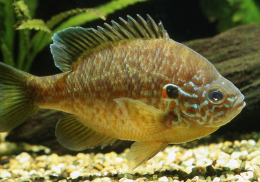
Orangespotted Sunfish
With its bright orange spots scattered across a dark olive to brown body, this sunfish species stands out in aquatic habitats. Found in slow-moving or still waters the Orange Spotted Sunfish prefer shallow waters with cover such as submerged vegetation, fallen logs, or rocky structures. While relatively small in size, their intriguing behavior and striking coloration make them a delightful addition to aquatic ecosystems.
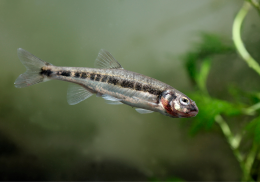
Fathead Minnow
With their distinctive rounded heads and olive-brown bodies, they often serve as an important forage species in aquatic ecosystems. They can be appreciated for their hardiness and ability to coexist with various fish species.

Talapia
Tilapia is the common name for nearly a hundred species of cichlid fish from the tilapiine cichlid tribe. Tilapia are mainly freshwater fish inhabiting shallow streams, ponds, rivers and lakes and less commonly found living in brackish water.
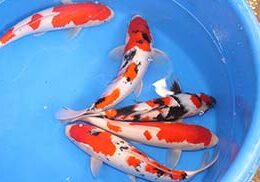
Koi
Koi or more specifically nishikigoi, are a group of fish that are ornamental varieties of domesticated common carp that are kept for decorative purposes in outdoor koi ponds or water gardens
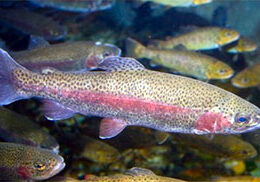
Rainbow Trout
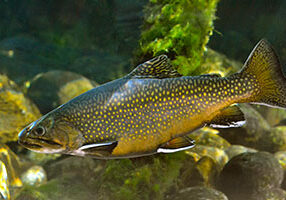
Sportsman's Mix Trout
